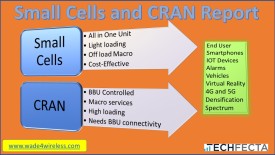I am not sure how long you’ve been in the radio business, but the systems of old didn’t use CAT5 for the fronthaul connection. In fact, they didn’t think it could survive on a tower out in the weather. CAT5 was not known to be used outdoors, and everyone thought it would be a major problem. In some ways it was, but let’s cover some history first.
BF – Before Fronthaul;
Again, let’s go all the way back to the 80s, 90s, and 00s when we had mostly a simple connection from the transmitter to the antenna. Those were the days, all we had to do was put in a power meter and measure forward and reflected power to see what the VSWR would be. It wasn’t quite that simple, but almost.
The transmitter would transmit power to the antenna, and the receiver would receive the signal from either the same antenna through a diplexer, or it had its own antenna altogether. It was a simple system, relatively simple to work on but the alarming we not so nice. In fact, it was nearly impossible to know what was going at the site without going to the site and testing it. We used to have all kinds of gear to test, a service monitor, a power meter, meters, test cables, dummy loads, and various hand tools to get into the defective part. Yup, when you went to the site, you needed to know how to use the equipment, test, and troubleshoot. You didn’t know much going there expect it was down or not working properly. Chances are good you carried spares with you so you could repair the unit immediately. You could do all the work on the transmitter on the ground. You only climbed if the antenna was bad.
The dawn of fronthaul;
Then, in the 90s and 00s and on, they split the radios. The BBU was on the ground, and the transmitter was near the antenna. This made sense at the higher spectrum, 1GHz and up so that you could minimize cable loss. Not many companies liked this because you would need a tower climber to troubleshoot and repair a unit. It would take longer and add a lot of risks. I remember Verizon workers saying they would never go for that.
Microwave systems were the same, the controller was on the ground, and the transmitter was in the air and chances are good it would attach directly to the dish. Sound familiar? It’s how all systems are today. When I installed them, everyone said it would never catch on and that the transmitter would fail in the air. All those little companies that did that were laughed at, then driven out of business by the big bad OEMs after they started doing it.
I remember installing all IP systems up the east coast, and other radio technicians laughed at me saying we should have installed T1 and T3s, that we were wasting time on a technology that would not catch on. I wonder if they remember mocking me? Oh, if only I could see them today!
By the way, this was not the carriers doing anything like this. They were stubborn to keep things the same and not change. This was the wireless ISPs that lived on the edge using the ISM band to deploy. Yes, that beautiful spectrum we use for Wi-Fi, 2.4GHz, and 5.8GHz was being used for wireless connections everywhere. Because of that spectrum, we have many of the commercial advances being used today by the carriers. The same carriers that refused to support any of it back then.
That’s when the OEMs had to adopt the new split radio methods to move ahead. Once the carriers saw more value in putting a radio head on the tower top, then they got on board. This gave tower climbers more and more work, but it also added more danger to tower work. It was no longer running coax and antennas up the tower. Now it was a complete system on the tower top.
Think about it, when the ISPs were deploying, they had small radio heads, little or no coax, maybe a simple microwave backhaul with a light radio head. The carriers, by contrast, are putting hundreds of pounds of equipment on the tower tops. The tower owners had to run structural and wised up, charging for every box on the tower. More money is going into the wireless ecosystem from a physical change.
The skills for a tower climber suddenly changed from the physical installation, coax connector termination, and grounding. Now they needed to test and terminate fibers. They were already testing coax runs. I did a lot of those for Nextel, making sure the cables didn’t have a kink or break in them affecting service. Now, the tower climbers had to learn to terminate fiber, which is a skill.
All of this was changing the landscape of deployment. Making harder and more dangerous, yet, this is one of the industries where the more you do, the more dangerous it is, the less money you make. Now climbers need more training than ever, but the pay rates are probably as low as they have ever been. What a shame. I get it; the carriers have to pay out larger dividends, but to screw the climbers? They need more training than ever, and they’re being watched closer than ever.
The end of coax on the tower;
Today, everything is going on the tower. Even the hi-tech BTS brains are being pulled up when they can.
There were many versions; they were not all CAT5 in the beginning. Some connections between the controller and the transmitter were COAX, of some type, that would transmit at a lower frequency, and the transmitter would step it up to the higher frequency. It’s all because we could not get out of the mindset that coax was used at the tower.
Then, speed mattered. Coax, and CAT5 could not handle high data rates at long distances, like over 300 feet. In fact, CAT5 was getting to be a bottleneck. Flash forward to today, voila, fiber everywhere. The only copper on the tower in LTE systems is the power and possibly the coax jumpers form the radio head to the antenna.
Fiber was the fronthaul of choice; it had to be fiber to handle the bandwidth and eliminate any interference that copper may have on the tower. The connection of fiber, with light, was so much more efficient than any copper could do. It pains me because I grew up with copper everything, who didn’t love copper? It could do anything at one time. Now, it’s just for power at the tower.
What if coax was eliminated altogether? Well, welcome to massive MIMO. All fronthaul will go directly to an active antenna. Goodbye radio heads, hello active antennas. This means that fiber will connect directly to the antenna along with power. Fiber will control, pass data, and send data back to the BBU or controller.
They still need power, the gauge of copper that can handle 10 or more amps of current. They need even more fiber to pass the data required of them. In fact, they need more fiber than traditional systems, just like 5G is going to want.
Wi-Fi had this idea for years, probably well over a decade, but the commercial carriers were slow to follow suit. Sure, some of them had active antennas, but more to save space and cost on the towers.
Now, in the MIMO world, coax only gets in the way. It’s a fiber world out there. For backhaul, for jumpers, and for fronthaul. We all want and need fiber to get these systems working. When I design these systems and put the offers together, I see the massive changes made. Not many others do because most people my age left the industry, can you blame them? It’s not what it once was.
Working on towers today, you will run fiber for data and copper for power. The antennas will migrate to active antennas, and we will see the remote units, radio heads, go away. We will see coax disappear from the commercial systems. It’s a new world and one that required fronthaul to be all fiber.
The makeup of the tower has evolved over the last 40 years. It is way more efficient than it ever was, and it is being asked to do more than it ever did. There is a reason, so many smaller companies went out of business. Big carriers control the money, they have all the customer, and they have a sustainable business model. They prefer to do business with companies they have a relationship with and trust. They pay more for that, and as long as the companies don’t screw up, which they do more often than you know, they maintain that OEM as a partner.
Smaller companies could not maintain the level of effort that carriers demand. Today, they demand a 5G product, a massive MIMO product, and active antennas. It is not cheap or easy to install any of these. It costs money to develop and test them, even though most of the OEMs do all of that in China. Today the USA does very little because most engineering, development, and manufacturing is done in China. Most RF engineering is done in India, and most coordination is done in Mexico. Not that it’s a bad thing, but the US workers, like myself, have to figure out where we fit in. This
economy is changing, but that is another discussion.
Fiber is key to these deployments, as is copper for power. It’s how the next 10 years or so will roll out. Fronthaul relies on fiber to make the connection and handle the data it needs for the end-user and for control.
So, when you look at a tower, think of the evolution that happened over the last 40 years, it’s amazing!
What about carrier DAS?
That’s right; I almost forgot to talk about DAS. In the old days, say 10 years ago, we used a lot of copper for DAS to distribute RF everywhere. We were worried about cable loss and self-interference and PIM. It became very complicated to roll out the DAS systems with all of the coax. The design was quite complicated.
As with all evolution, DAS became more and more digital. We started distributing radio heads everywhere instead of antennas. We started using small cells where loading was not critical. The DAS system consisted of a BBU hotel in one location, and the radio heads were all around. They were connected by fiber.
In fact, carrier DAS is now more worried about the layout of the fiber layout in the building, cooling at the head end, and power requirements. Oh, let’s not forget about the backhaul, a key component which generally each carrier has their own. These systems are relying on the carrier to do a lot of work.
Public safety DAS is pretty much the same as it was 10 years ago. While FirstNet may change that, it will take a long time for them to upgrade and get away from the dedicated spectrum used in push to talk, PTT, systems. Copper is dominant in most public safety systems. They still distribute radios, but it is a much different design. Not a lot of radio heads broken out in that design.
The extension of fronthaul beyond the site:
Now, with CRAN, the fronthaul is not just for the site! It can have a BBU almost anywhere.
There are limitations today for the concentrated RAN, CRAN, but as we move closer to cRAN or C-RAN, which is Cloud RAN, we may be able to have the BBUs in a concentrated area in a region.
CRAN allows you to have a BBU hotel in one location, which allows all the upgrades and changes to firmware, software, new cards, and so on all to be done in one location for sites all across the city. It makes a lot of sense. Also, when you concentrate your resources, they are more efficient in the handoffs, self-interference, and spectrum planning in general. The only downside is that there are time limitations, so the BBUs have to be within a certain distance to the radio heads.
C-RAN, the cloud, should take care of some of the distance limitations once it happens. The current hold up is how much specific processing takes place in the BBU. They do a lot of proprietary work that the cloud can’t do, yet. I think it will happen and I think that the one thing that will make a difference is the carriers pushing towards ORAN, Open RAN. This will help the carriers get away from the OEMs that won’t play with others and create a white box for RAN and BBU. While they want this to happen, think of the security issues it opens up. Someone would be able to hack into these boxes with ease. But hey, the carriers are saving money, that’s all that matters, right? That’s the end game! Better performance for less cost.
The fronthaul systems are making the RAN more and more efficient and opening up new doors for the carriers to deploy. When the fronthaul is remote, the spectrum use is more efficient. Instead of concentrating everything in a macro, the macro sector can be put at a location that uses the spectrum efficiently in that area. It’s a cost-effective way to deploy if it’s planned properly.
Think about it:
While we all love fiber today, there will soon be something new passing even more data. Keep your imagination open. Wireless is doing more and more. I talked about how we never thought we would get out of the T1 and T3 cycles. There was T1, E1, T3, SS7, and other formats out there that we thought would never go away. Then we use CAT5, CAT6, and now fiber. What’s next? You tell me!
Resources:
· https://wade4wireless.com/2018/04/01/cell-backhaul-and-midhaul-and-fronthaul/
· https://wade4wireless.com/2017/01/24/commercial-5g-ran-backhaul-and-fronthaul-overview/
· https://wade4wireless.com/2015/07/27/small-cell-fronthaul-and-odas/
· https://wade4wireless.com/2018/05/28/the-mobility-backhaul-report/
Do you want an occasional email with free PDFs of these reports along with book and training offers? Read posts like these offline!
Click here to sign up!
Be smart, be safe, and pay attention!
See Ya!
More products from TechFecta and Wade4Wireless:
The foundations below do beautiful work, spreading love when all seems lost.
Climbers can get seriously injured and/or die on the job. Support the workers who build and install the wireless systems!
Together we can honor and remember the fallen in our wireless family.
Hubble Foundation helps the families of climbers in a time of need and beyond with financial support and counseling!
Tower Family Foundation supports the families of tower climbers at the time of crisis when a climber falls with financial assistance and more.








 Putting together your smart city tech solutions, planning, development, and more…TechFecta! Guiding you to a better plan through consulting!
Putting together your smart city tech solutions, planning, development, and more…TechFecta! Guiding you to a better plan through consulting!

